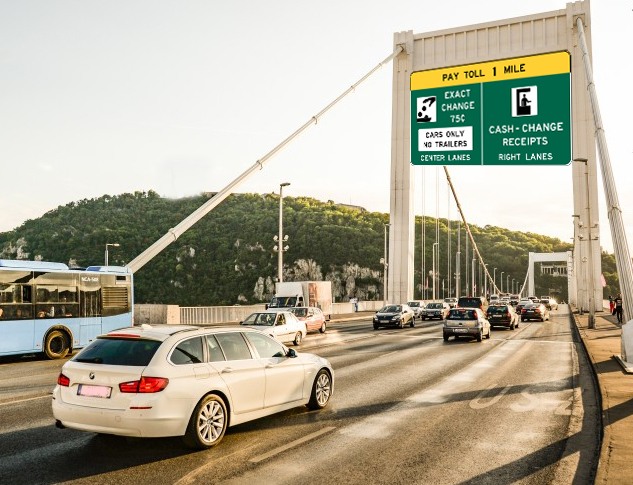For several states, the construction of toll lanes and bridges is a driving force for managing congestion and collecting funding for projects. Many road systems do not have the capacity to handle peak-hour loads and this forces many people to wait in line for that limited road space. If the government accommodated all motorists and built several lanes, this would demolish millions of buildings and trees and would turn metropolitan regions into a giant concrete slab. Those roads would then be grossly underutilized during non-peak hours. It just wouldn’t be cost effective.
Traffic studies have shown that motorists will readjust their driving patterns and more will drive during peak times when free lanes are added. Charging motorists to use these lanes ensures that traffic is moving more swiftly. To reduce congestion on the paid lanes, tolls might fluctuate and be adjusted at higher rates during peak times. Transportation planners foresee more toll connections in the coming years and here are a few of those upcoming projects.
According to the Illinois Department of Transportation (IDOT), the Stevenson Expressway has about 12 hours of daily congestion and four crashes a day. IDOT has proposed to add two new lanes in each direction from Interstate 90/94 in Chicago to I-294, then one toll lane each way from I-294 to I-355. Costs could reach about $700 million and would likely be financed through a public-private partnership. If the plan moves forward, IDOT could begin looking for contractors in 2019 and the project could be finished by 2021.
The state of Maryland will seek a $7.6 billion public-private partnership to add toll lanes to 42 miles on the Beltway and 34 miles on Interstate 270 from the Beltway to Frederick. The state would build and manage 29 miles of toll lanes on the Baltimore-Washington Parkway, assuming that the U.S. Interior Department transfers the road to the state. That project is estimated to cost $1.47 billion. Maryland expects to solicit bid proposals next year.
 Portland city council members directed the Portland Bureau of Transporation (PBOT) to study the use of tolls. Portland could impose tolls on the bridges across the Willamette River and such heavily used roads in the city as 82nd Avenue and Martin Luther King Jr. Boulevard. The study would also include tolls on Interstate 5 and I-205. The 2017 Oregon Legislature directed the Oregon Department of Transportation to study freeway tolls as part of the statewide $5.3 billion transportation funding package it approved. The council also directed PBOT to study ways to reduce the impact of tolls on lower-income residents. PBOT was directed to report the results of its study back to the council within a year.
Portland city council members directed the Portland Bureau of Transporation (PBOT) to study the use of tolls. Portland could impose tolls on the bridges across the Willamette River and such heavily used roads in the city as 82nd Avenue and Martin Luther King Jr. Boulevard. The study would also include tolls on Interstate 5 and I-205. The 2017 Oregon Legislature directed the Oregon Department of Transportation to study freeway tolls as part of the statewide $5.3 billion transportation funding package it approved. The council also directed PBOT to study ways to reduce the impact of tolls on lower-income residents. PBOT was directed to report the results of its study back to the council within a year.
The Transportation Agency for Monterey County (TAMC) board decided to move forward with plans to explore funding options for a proposed new four-lane highway 156 toll road dubbed the Monterey Expressway. The board agreed to accept the study and requested that the California Department of Transportation proceed with a supplemental environmental impact report for the project while TAMC staff continue to seek a public-private partnership to fund the project. The $375 million plan includes the new expressway along, a rerouted Blackie Road and new interchanges at Highway 101 and Castroville Boulevard. Revenue from Measure X, which authorizes a three-eighths percent sales tax to benefit local road maintenance and benefit transit and pedestrian projects, will fund $30 million of the project. The current Highway 156 route will remain intact as a frontage road serving as a free alternative route.
Strategic Partnerships, Inc. is one of the leading government contracting consulting firms in the county. Contact them today to learn more about growing your public sector business.
